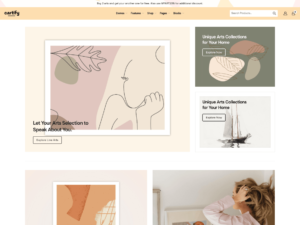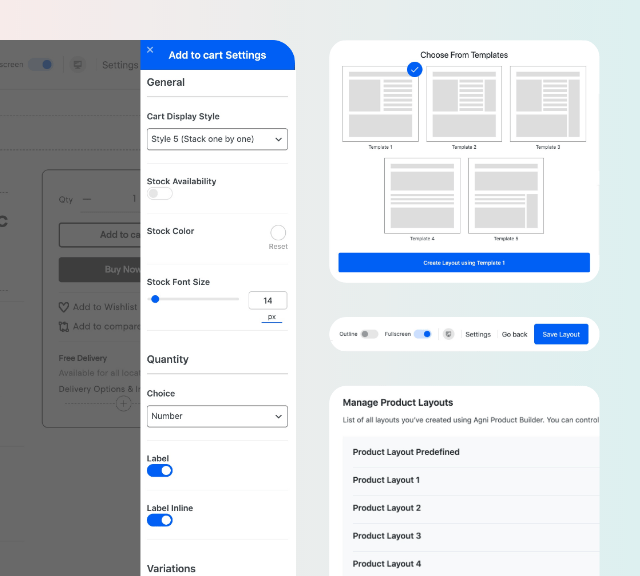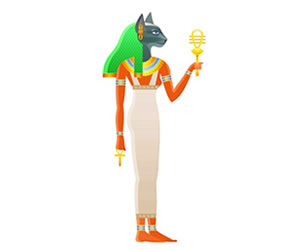Bastet is the Egyptian goddess of the home. She is also the goddess of felines and a protector goddess. At times, Bastet may be called or referred to as “Bast”. She is often closely associated with the goddess Sekhmet, a lion goddess.
As Egyptian mythology evolved, Bastet became known more as a docile household feline goddess and Sekhmet became known as a fierce lioness and warrior goddess.
Quick Facts about Bastet
- Women wanting children would show Bastet amulets with their desired number of offspring. She granted their wishes
- As a feline, she was sometimes depicted with ear and nose piercings. One example is the Gayer-Anderson cat statue, named after the individuals that donated it.
- Her name changed during the New Kingdom to add an extra “t,” which is more feminine.
- She was honored by worshipers with golden jewelry, as cats were associated with riches and royalty.
- Bastet was considered a good mother and had children of her own.
- She was one of the most honored deities in ancient Egypt.
- She had a yearly festival in her honor that attracted over 700,000 people from across Egypt.
- Festival activities included drinking copious amounts of wine, which is a divine drink associated with the goddess
- Bastet was sometimes portrayed wearing a necklace with a Wedjat eye, which symbolized wholeness and provided protection.
- At times she is also portrayed holding a sistrum in her right hand, which is a percussion instrument popular in ancient Egypt.
- Similarly, she is often seen holding an aegis with a lion’s head in her left hand, which is a protective shield made of armor.
- Bastet was sometimes known as the goddess of dancing and singing.
- During the annual festival dedicated to Bastet, a single torch began the celebration, followed by a torch-lighting ceremony throughout her hometown.
- She was associated with a number of other Egyptian and Greek deities.
- Bastet’s family included a sister named Hathor, a son named Maahes and possibly a second son named Nefertum.
- She was the wife of Ptah, a god of creation, rebirth, and craftsmen.
- Bastet was once worshiped for her role as a fierce protector in Lower Egypt.
- Worshiped as a feline mother-like figure in Upper Egypt.
- Worshiped mostly as a sun deity in Lower Egypt in association with her father.
Origins
Bastet’s origins are uncertain, but it is believed by historians that she was already a popular goddess by the third millennium B.C.E. Some of the earliest physical evidence points to veneration of the deity close to the year 2800 B.C.E., in the form of stone vessels that were found near a temple in Saqqara.1 Saqqara is an ancient Egyptian city located about 20 miles south of Cairo, not far from Memphis.
This goddess had several names prior to being called Bastet, including Baast, B’sst and Ubaste. The American Research Center in Egypt notes that one of the stone vessels in Saqarra has the inscription b#s.t, and likely refers to the goddess.1 Over time, she became widely known as Bast. Some scholars believe that, eventually, it was changed to Bastet in order for the last “t” in “Bast” to be pronounced. Others state the additional t was to make Bastet sound more feminine.
Over the next several hundred years (circa 2600 – 2200 B.C.E.), a main cult center and city dedicated to Bastet called Bubastis began to form. This center was located approximately 50 miles (80 kilometers) north / northeast of Cairo. In addition to being centered around Bastet, it was also devoted to sacred cats. During the height of worship to Bastet, hundreds of thousands of Egyptians would make pilgrimages each year to Bubastis to honor and pay respects to the goddess.
Today, Bubastis is referred to as Tell Basta in Arabic or Per-Bast in Egyptian. Tell Basta is a substantial archaeological site with the remains of many monuments, temples and statues. The ancient city’s dedication to the goddess can easily be seen in the different buildings located at the site. First and foremost, is the Temple of Bastet, one of the largest buildings in Bubastis. A sanctuary dedicated to her son, Maahes, was close by. Excavations are ongoing at Tell Basta with researchers periodically announcing new finds to this day.
Appearance
Although Bastet initially began as a goddess of the sun based on her father’s powers, her appearance was predominantly feline. Her appearance changed over time from a wild lioness to a domesticated cat. She is often portrayed as a female cat in a seated position.
Family
Bastet was the offspring of Ra, the Egyptian god of the sun. Ra was her only parent.
Ra was believed to be the original creator deity in much of Egyptian mythology. He created a number of other deities by himself, and not in conjunction with a goddess. He was said to have created Shu and Tefnut. He also had three daughters that constituted the eye of Ra. These three daughters were Hathor, Sekhmet and Bastet. As such, Bastet has a number of siblings including Shu, Tefnut, Hathor and Sekhmet, but not in the sense of them all being from two parents.
There is some discrepancy over who Bastet was married to and who she gave birth to, due to Bastet and Sekhmet being very similar in Egyptian mythology. It is possible that in different belief systems, Bastet and / or Sekhmet were married to Ptah, the Egyptian god of architecture and craftsmanship. Ptah and Bastet gave birth to a son, Maahes. Maahes is an Egyptian war god with the head of a lion – a strong connection to Bastet.
It is also possible that Ptah and Bastet or Sekhmet had a second son named Nefertum. Nefertum was was born from a lotus flower and was associated with sweet and pleasant smelling things, including perfume.
Symbols
The primary symbol associated with Bastet is the cat. She is also associated with the sun and the moon. Her affiliations with the Sun and Moon typically occur in earlier Egyptian mythology.
Powers & Duties
Initially, Bastet protected her father from harm. In this role, she primarily protected him from harm threatened by Apep, the snake-god and his arch nemesis. As was common among female gods in later texts, she gained more power and assumed more responsibilities over time.
Coinciding with the domestication of the cat, Bastet’s image changed to become less intimidating, even as her powers increased. For example, Bastet gained the power of presiding over childbirth and expectant mothers sometime after the domestication of the house cat. This role symbolized both her growing power and influence and high fertility levels associated with the domestic cat.
Later, the goddess acquired a third major duty of protecting people against evil spirits and contagious diseases. Although it was not a main responsibility, she had unique powers to charm snakes and combat the effects of poisonous venom, which was a trait attributed to cats among ancient Egyptians. She is seen battling snakes in some mythological scenes, including engaging in combat with Apep.
Worship
In her honor, entire cemeteries of mummified house cats (often buried near their owners) appeared in Bubastis and Memphis during the Ptolemaic periods. Worshipers donated offerings of small bronze statues of the goddess. She was also honored through jewelry, especially amulets, made of gold molded into the shape of cats.
Other Symbols and Affiliations
Bastet has connections with the sun and solar system in some stories, too, due to the controlling influence of her father. These depictions are more common in earlier stories and regional mythology. Based on this association, she is sometimes also called the “Eye of the Moon.”
In addition to gender roles, her image is also influenced by politics. As the Greek empire grew in power, and eventually conquered surrounding lands, Egyptian mythology changed to reflect the influence of the Greeks. Therefore, during stories from the Ptolemaic Dynasty, Bastet is often linked to Greek goddesses and even shares overlapping powers.
More Bastet Facts
| Name(s): | Bastet, Bast |
| Rules over: | Home, Domestic |
| Gender: | Female |
| Symbols: | Cats, Sun, Moon |
| Sacred animals: | Cats |
| Parents: | Ra (Father) |
| Siblings: | Hathor (Sister) |
| Greek Similar: | Hestia |
| Roman Similar: | Vesta |
References
- Lange-Athinodorou, Eva. “The Goddess Bastet and the Cult of Feline Deities in the Nile Delta.” American Research Center in Egypt, www.arce.org/resource/goddess-bastet-and-cult-feline-deities-nile-delta. Accessed 29 Nov. 2020.


























